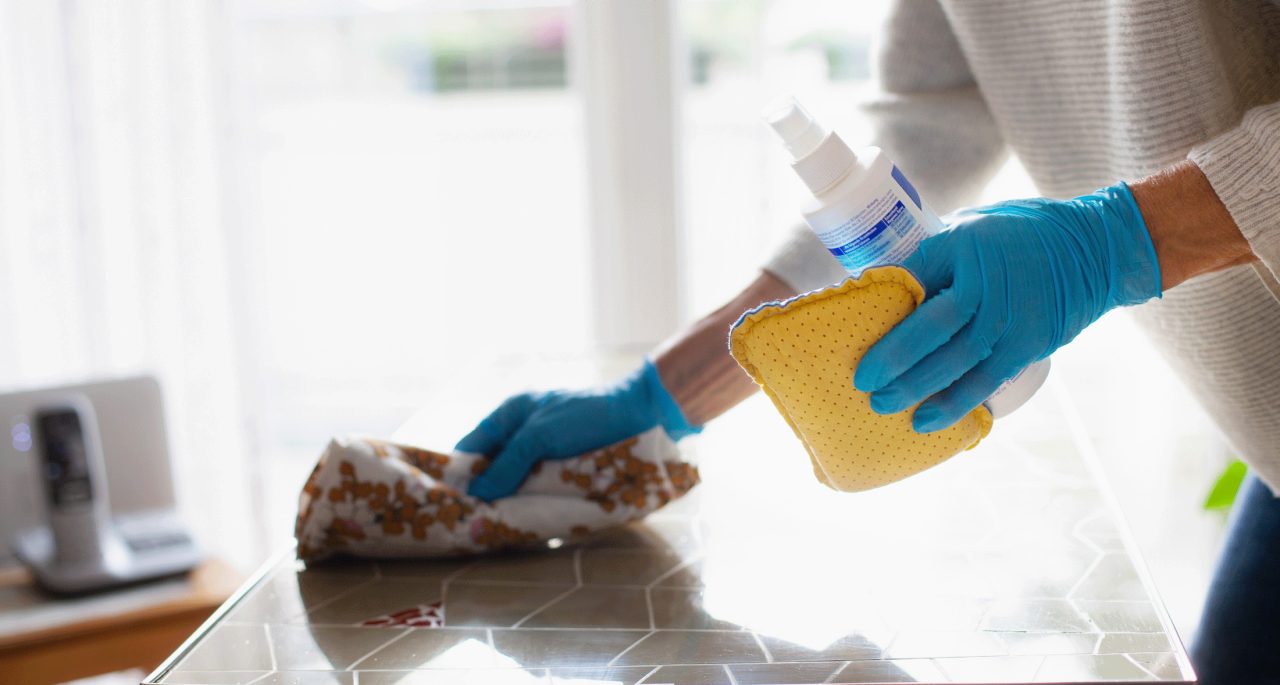Do Natural Home Cleaners Work?

Many cleaners — with unpronounceable chemicals and artificial fragrances — can be nearly as worrisome as the dirt and bacteria you’re trying to remove.
We all want family, kids, and pets to be safe. Yet many store-bought cleaners — with their unpronounceable chemicals and artificial fragrances — can be nearly as worrisome for those in your home and the environment as the dirt and bacteria we’re trying to remove.
Many people are using DIY household cleaners. But are there truly safe ways to disinfect your home naturally, without resorting to harsh chemicals?
YOU MIGHT ALSO LIKE: What Is COVID-19?
The short answer: Yes, you can make your own household cleaners cheaply and easily. While they may not eliminate all bacteria from an environment, they also won’t be the equivalent of germicidal nuclear war in your bathroom, and will disinfect far more safely than much of what you buy at the store. All are safe to use and have in your home, and will not harm children, pets, or the environment when used as directed.
Of the many natural home cleaners, vinegar is one backed by some science, along with baking soda, citric acid, and salt.
Vinegar is a remarkably inexpensive, all-purpose cleaner. This author’s own grandmother spoke of using a 50-50 mix of vinegar and water to clean her floors while raising six healthy kids.
The smell of vinegar is initially strong, but it dissipates within a few minutes — and is still less overpowering than many store-bought products. If you don’t favor its scent, add lemon juice: citric acid is also an effective antibacterial. The best part? Vinegar is grandma approved.
Though known since antiquity for its cleansing prowess, it’s still not entirely clear how powerful a disinfectant vinegar is. It is at least moderately antibacterial, antifungal, and antiviral. Some studies show vinegar can kill Escherichia coli and Salmonella, while in others it does not. Vinegar will also kill flu viruses, including avian flu, and tuberculosis.
The strength of the vinegar can matter. In the United States, distilled vinegar at the grocery store generally has a standard concentration of 5 percent acetic acid, vinegar’s primary cleaning component; apple cider vinegar has slightly more, at about 6 percent. Vinegar sold in other countries will often have higher percentages of acetic acid, up to around 10 percent. The trials linked to in this story almost entirely tested store-bought, 5 percent acetic acid vinegar.
More study is needed. Some experts point out that vinegar, as an inexpensive and fairly effective all-around antimicrobial, should be particularly useful in low-resource settings. Other experts suggest sticking with bleach or Lysol Antibacterial products for complete assurance.
If you choose to use vinegar, know that you’re doing a lot to reduce bacteria and other problematic microbes in your household, while also doing no harm. Vinegar is extremely safe. Bleach, on the other hand, can be dangerous. Household cleaners sold in the United States aren’t required to disclose their ingredients, so you may not know when you’re using something that contains ammonia — and the fumes ammonia and bleach create are lethal. Never mix bleach or ammonia, and never dilute either one with anything except water.
To clean with vinegar, experiment and vary water-dilution ratios according to the job. Mixing vinegar with salt (table salt is fine — any sodium chloride will do) increases vinegar’s antibacterial action, as does heating it to warmer temperatures. Try putting it in the microwave before cleaning. For heavy grime, such as a tub that hasn’t been cleaned in a while, spray it on neat with a mister. Let it sit for 10 to 15 minutes, then return and wipe off. Mix vinegar with one part water to clean floors and countertops, or to wipe down appliances or other frequently handled surfaces, such as door handles. Vinegar is excellent to clean stainless steel, but don’t use it on other metals, such as galvanized — it will corrode them.
Vinegar combined with baking soda makes a good scrub and whitener — try it on ovens or stained walls. The same combo also makes a highly effective drain clearer: drop a half-cup to a cup of baking soda over a clogged drain or toilet, then follow with enough vinegar (often a quarter- to half-gallon) to create a foaming reaction. Let sit for a few minutes, then rinse the drain with hot water. Supplement with a plunger, if necessary, to safely take care of the vast majority of household clogs.
One caution: studies suggest vinegar won’t offer complete, hospital-grade disinfecting levels. For total safety, such as with plastic cutting boards used to prepare raw meat (never cut raw meat on a wood cutting board), consider bleach diluted to 10 percent of a water solution or a product called Lysol Antibacterial — both were more effective than vinegar in one oft-cited study. You could also just wash the plastic cutting board in soapy water, then run it and the sponge used to clean it through the dishwasher.
Updated:
April 22, 2020
Reviewed By:
Janet O’Dell, RN